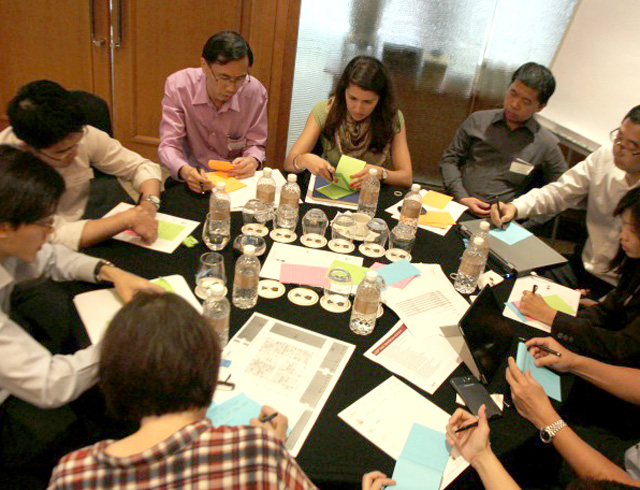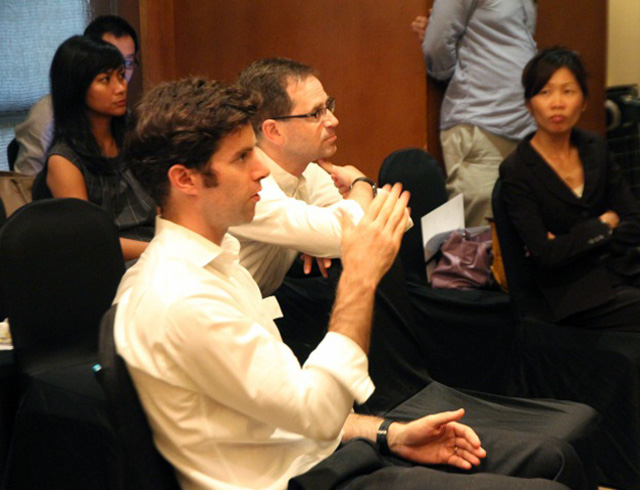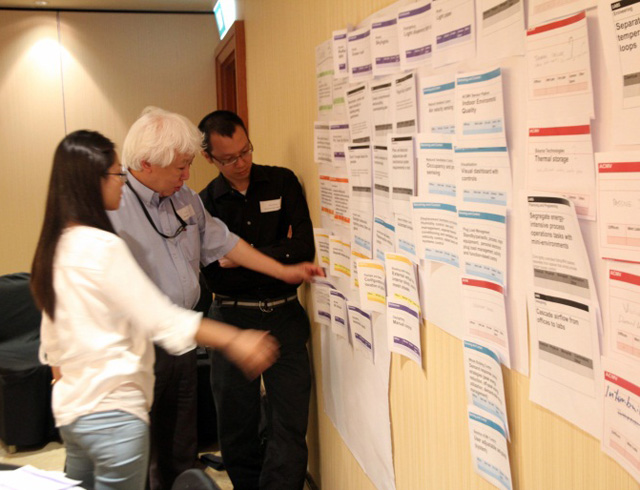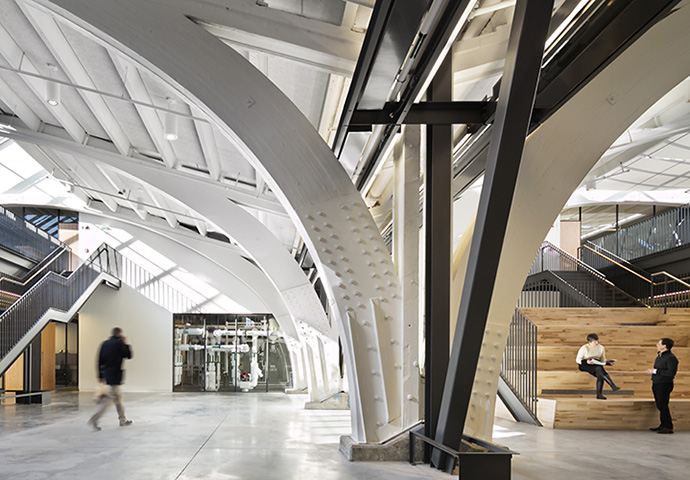Sustainable Design Charrette in Singapore
Team members brainstormed feasible sustainable strategies for an academic building at Nanyang Technological University in a session that simulated integrative process.
Principal David Riz and Senior Researcher Roderick Bates recently traveled to Singapore to share their rich experiences with the integrative design process undertaken for the design of the Energy Efficent Buildings (EEB) Hub in Philadelphia, a project of the Department of Energy.
Integrative process is based on the idea that sustainable design is most easily achieved and sustained through a whole-building design process. This process is a multidisciplinary strategy that effectively integrates all aspects of site development, building design, construction, and operations and maintenance to minimize a building's resource consumption and environmental impact while improving the comfort, health, and productivity of building occupants. This kind of process ideally leads to a building that is economical in terms of lifecycle costs, including operations, maintenance, and repairs, and leads to reduced user turnover by making buildings that are more desirable to users. An inclusive process is key to whole-building design and is most effective when applied at the earliest stages of design.
Drawing on their experiences in the design of EEB Hub, David and Roderick facilitated a design charrette (workshop) to identify feasible, cost-effective sustainable measures for a “high performance, innovative and iconic living lab” housed in the new North Spine Academic Building (NSAB) for Nanyang Technological University in Singapore. They worked in collaboration with the Scientific Planning and Support (SPS) team at the university's Energy Research Institute (ERI@N) to host the one-day charrette in downtown Singapore.
Roderick Bates (foreground), Senior Researcher, and David Riz, Principal, traveled to Singapore to demonstrate an alternative to the traditional design-bid-build process.
With a main goal of identifying feasible and cost-effective sustainable measures that NSAB could implement, the charrette provided an effective means to engage a wide diversity of participants in an intensive and focused brainstorming session, initiating the type of collaboration essential to achieving the project's goals. Approximately 50 individuals involved in the project, from various backgrounds and fields, participated—including clients, university faculty and staff members, architects, engineers, government officials, green building consultants and experts, builders, mechanical and electrical engineering and structural consultants.
The charrette included a plenary session, two break-out sessions, and a synthesis session. The plenary session provided a general overview of the project, during which presentations were given by the client, ESD consultants, and architects. In the first break-out session, stakeholders brainstormed the shared values that would be the key framework for strategies to achieve the Green Mark Platinum Prototype award, a rating of the Building and Construction Authority of Singapore. These values were then synthesized and put to vote. In the second break-out session, stakeholders worked to identify various integrated strategies to achieve 40 percent energy savings (necessary for Green Mark Platinum Plus) with the help of prop cards identifying a wide range of potential passive and active energy-conservation measures. Each group then made a presentation describing their strategies to fellow participants.
Charette participants worked together to establish project values and choose energy-saving design strategies.
The charrette modeled good communication between the numerous project team members dispersed among three groups. They were unified by the shared design and construction values and the understanding that the project team must continually scrutinize how a building's design and interior function can affect its overall energy consumption and environmental impact in the long run.
Next steps will include a close review of the posited active technology and passive design strategies by the SPS team, with input from all stakeholders. The values established during the charrette will be continually consulted and incorporated at every stage of design. Champions and partners for certain ideas and strategies will be identified and will be invited to play a more active role during the review process.
The SPS team, together with the architects and engineers, will incorporate the reviewed strategies into a concept design for the building. The concept design will meet the list of key performance indicators listed by the client and will also try to meet the requirements for a Green Mark Platinum Plus rating. The SPS team will conduct preliminary and detailed energy modeling and simulation to validate the conceptual design strategies proposed for NSAB.
Critically, the team from ERI@N will document the project and the process. The lessons learned throughout this project and the charrette will be noted for use in future projects, and a network that effectively conveys sustainable design knowledge will be established.






